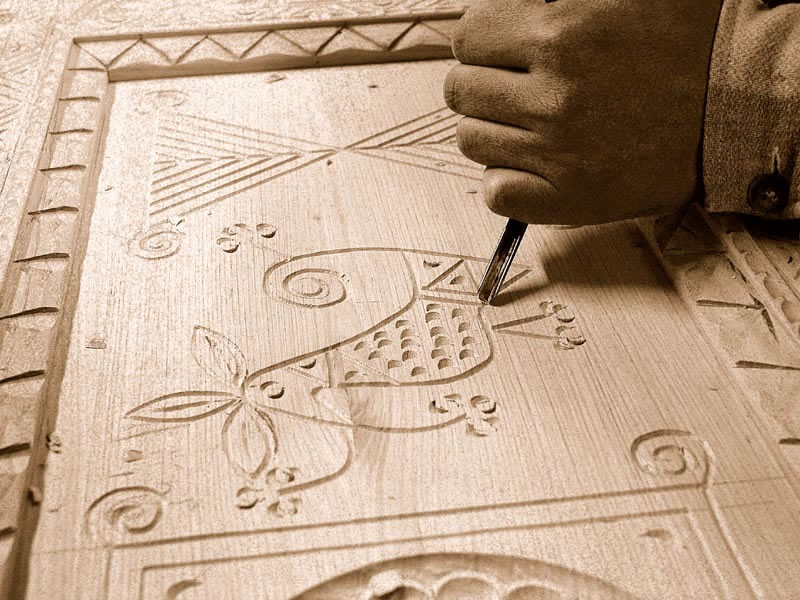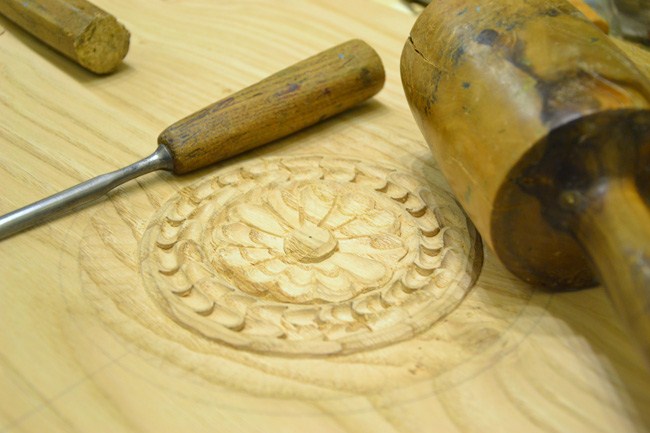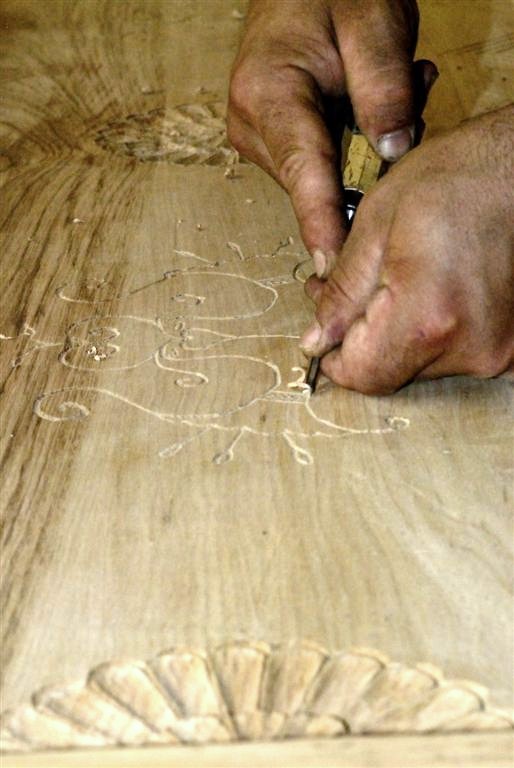



The production of traditional wooden artefacts consists of two stages, involving different techniques and tools. The first stage concerns the constructive aspects of the object, namely the selection of wood and its shaping, while the second stage concerns the decorations, characterized in Sardinia by the traditional intaglio, featuring a peculiar iconographic repertoire.
Creation of artefacts
The choice of wood is critical to the creation of a quality object. In the past, the collection of timber started by cutting down the tree, squaring it and cutting it into boards.
The traditional chest is generally made of chestnut, castangia or castanza, particularly resistant to moisture.
The wood chosen must be seasoned, i.e. the amount of water, being 75% of the total weight, should drop to 17-24%. The seasoning, before the introduction of the current drying-up systems, was carried out outdoors by means of air circulation, under an appropriate shelter, protected from direct sun and rain. A good seasoning could last between two and four years.
The crafting process continues with the measuring and cutting of the pieces which are to be assembled, using precision tools and square rulers to verify angles and inclinations. The number of pieces is always minimal to avoid different reactions to moisture and to provide greater stability to the artefact. Once they are cut, the pieces are planed and smoothed.
The junction of the pieces is always very simple. In traditional chests, pieces were usually placed side by side and nailed, featuring interlocking corner joints, where only one edge is grooved to accommodate the other. Such an easy installation in the past was due to the fact that the creation of an artefact was often carried out by peddling craftsmen who sold the decorated pieces and assembled the parts at the customer's house. However, the workshops made more complex joints such as rebated, top-bottom and dovetail joints.
Carving decorations
In order to carve, pintare or frorire, the object, the craftsman decides the composition, mustras, first drawing the outline of the motif with a pencil using thin wooden shapes, sestos.
Free-carving tools include a dozen types of chisels and gouges. Their different cutting edge allows the creation of peculiar motifs on the surfaces that are to be decorated.
The tilting of the tool during crafting is also crucial. By reducing the tilt, different patterns may be created, such as chamfers, ungras in different versions, ungras de pudda, "chicken nails", puntinas, "pins", iscattas de pische, "fish scale-shaped", and sequence motifs, picchia picchia.
The vertical grooves carved on chest bases are generally embellished with sa faa or pistoccu, by emptying the groove with a preliminary bottom-up incision carved with a gouge.
The typical rosettes, orroda, are obtained by drawing a circle with the compasses. The first element that worked using a relief technique, a punta di sgubbia, is the central button, followed by the outer ends of the petals which are connected to the center with a very steep section. A similar procedure is carried out to obtain half-rosettes, arrosas.
Using the a punta di sgubbia technique, serpentine-shaped motifs are carved, sa serpentina, both simple or complex with intertwined wavy lines and spirals.

